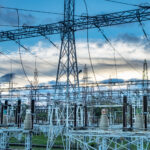“Knowledge workers” anticipating a cheap energy/low emissions post-industrial work-from-home economy are having to confront the need for more industrial production of natural resources and infrastructure as the energy needs for the data centers making their work possible via the internet, cloud and now Artificial Intelligence (AI) are growing exponentially.
Data centers are increasingly recognized as another source of U.S. economic power, with the country the market share leader of the roughly 8,000 data centers located around the world. Data center inventory has grown about 25% over the past year in the U.S.
That’s expected to continue. Atop the nearly $150 billion Amazon has committed to data center spending over the last two years, the company expects to invest about as much over the next 15 years in its efforts to protect its market share leader position in the cloud services market.
Simply generating an image from AI can consume as much energy as driving a gas-powered car a short distance, and a single data center consumes nearly 65 megawatts a year. More sophisticated data modelling and more users could quickly push the energy needs of a single center to over 100 megawatts a year. Growth in cryptocurrency, another huge consumer of power, could accelerate these trends. Growing public awareness as to the energy impacts of AI has generated some public backlash as they increase the likelihood of electricity rate increases.
Natural gas, according to CNBC, is expected to provide most of the power needed, which will also require a projected $50 billion in utility upgrades. In Kansas City, the closure of a coal plant has been postponed due to the construction of a new data center.
Some Big Tech companies (e.g. Microsoft, Google, ChatGPT) are investing in portable battery storage, nuclear fusion and fission, renewables and geothermal to secure needed power as well as to reduce their carbon footprint.
Google’s emissions have grown nearly 50% since 2019 through 2023 despite claiming their data centers are nearly twice as efficient as the industry average. Microsoft’s have grown nearly 30% from 2020 to present.
As AI imposes its fast-growing energy appetite on the grid, grid stability faces yet more pressures. Transformers appear to be the weakest link in keeping up with projections with the average age of a transformer at 38 years old, ironically about the time the scale of internet usage fundamentally changed energy demand dynamics. More transmission lines will take years to get approved, funded and built.
Ironically, the birthplace of many of these energy-consuming tech companies, California, is being bypassed for data centers due to the spotty record of power companies in the state. Northern Virginia is home to roughly 70% of the data centers in the country.
NOTE: Two companies presenting at EnerCom Denver-The Energy Investment Conference in Denver August 18-21, 2024, will be speaking about their own efforts to add to power generation and supply security. They are OKLO and Chapman Nuclear.
By Jim Felton for oilandgas360








